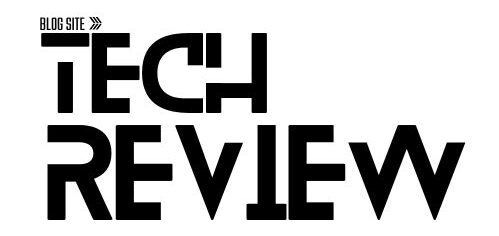Introduction
Electronic batch records (EBRs) have become a critical component in the pharmaceutical industry, helping companies maintain compliance with regulatory requirements such as FDA’s 21 CFR Part 11. By replacing traditional paper-based records with digital solutions, EBR systems streamline the entire batch manufacturing process, reduce human error, and ensure data integrity. This shift to an electronic batch record system also enhances traceability, making it easier for companies to manage and audit their batch production data effectively. EBR solutions are designed to ensure the quality and accuracy of each batch, providing a reliable audit trail and minimizing the risk of regulatory non-compliance.
The implementation of electronic batch records software brings significant benefits, including automation, validation, and improved management of batch processes. Life science companies, including those in medical devices and pharmaceuticals, have long relied on batch manufacturing processes, and digitizing these records has improved both efficiency and compliance. By adopting EBR software, companies can ensure that their production data meets the standards required by the FDA, while also optimizing their manufacturing workflows and reducing audit risks.
Key Takeaways
Electronic batch records (EBRs) streamline compliance by automating batch documentation, reducing human error, and improving data integrity in the pharmaceutical industry.
EBR systems enhance traceability, ensuring that batch production data is fully documented and easily accessible for audits.
Implementing EBR software helps pharmaceutical companies meet FDA 21 CFR Part 11 requirements by providing secure, tamper-evident digital records.
Automated EBR systems reduce human error, improve batch traceability, and enhance overall efficiency in batch production processes.
Electronic signatures in EBR systems provide secure, traceable documentation throughout the batch production process, ensuring compliance with FDA regulations.
By digitizing batch records, companies reduce audit risks and streamline their compliance efforts, saving time and improving regulatory adherence.
Benefits of Electronic Batch Records for Compliance in the Pharmaceutical Industry
Electronic batch records (EBRs) offer significant advantages when it comes to maintaining compliance in the pharmaceutical industry. By automating the batch documentation process, these records eliminate human error, ensuring the integrity of production data. EBR systems streamline the entire manufacturing process, providing clear traceability from start to finish. Compliance with regulatory requirements such as FDA’s 21 CFR Part 11 is easier to maintain, as electronic records provide reliable audit trails. EBR software also improves data integrity by digitizing batch production, minimizing the risks associated with paper-based records. Overall, electronic batch records help pharma companies stay compliant, reduce operational costs, and boost efficiency in their production processes.
Compliance in the Pharmaceutical Industry
1. Eliminating Human Error with Automated Documentation
Automated EBR systems reduce the likelihood of errors in batch documentation, improving accuracy and ensuring compliance with regulatory standards like FDA 21 CFR Part 11.
2. Strengthening Traceability in Pharmaceutical Audits
Enhanced traceability through EBR systems makes it easier to follow every step of the batch production process, ensuring compliance during audits.
3. Securing Data Integrity Through EBR Systems
Data integrity is critical for regulatory compliance, and EBR systems protect against data loss or tampering by ensuring that records are reliable and accurate.
4. Accelerating Audits with Digital Batch Records
Digitized batch records offer immediate access to important production data, significantly reducing audit times and preventing costly delays.
5. Reducing Costs and Boosting Efficiency in Manufacturing
By digitizing batch records, pharmaceutical companies save on costs related to paper and manual processes while improving the overall efficiency of batch production.
6. Ensuring Regulatory Compliance with Electronic Systems
EBR systems help companies meet strict FDA requirements by maintaining accurate and accessible records, ensuring compliance with evolving regulations.
The Importance of Data Integrity in EBR Systems
One of the most critical aspects of using electronic batch records (EBRs) is ensuring data integrity. In a pharmaceutical setting, any inaccuracies or discrepancies in batch production data could lead to compliance issues with regulatory bodies such as the FDA. EBR systems help to digitize batch records, providing reliable documentation and preventing the loss of data that can happen with paper-based systems. This ensures that all production processes are clearly documented and traceable, making audits more straightforward and accurate. Proper implementation of electronic records and signatures is key to maintaining compliance and avoiding any legal complications.
How EBR Software Improves Audit Readiness
Audit readiness is another significant benefit of electronic batch records. The transition from paper-based records to an EBR system helps companies prepare for audits by providing real-time access to accurate, well-organized records. Pharmaceutical companies using electronic batch records can track every batch produced, ensuring full traceability throughout the manufacturing process. In addition to reducing human error, the automated system minimizes delays during audits, as all the necessary documentation can be retrieved quickly and efficiently. EBR software also supports compliance with 21 CFR Part 11, making it easier for companies to meet stringent FDA standards.
How EBR Systems Automate and Streamline the Manufacturing Process
Using electronic batch records (EBRs) can automate and streamline the manufacturing process in pharmaceutical companies. Traditional paper-based batch records are time-consuming and prone to errors, but EBR systems eliminate these inefficiencies. The implementation of EBR software helps companies move away from manual, paper-based processes and instead adopt a fully automated approach. This automation ensures that production data is collected accurately and in real-time, improving the overall management of batch production. With EBR systems in place, companies can quickly identify issues, reduce downtime, and increase productivity. Additionally, EBRs help ensure that regulatory requirements are met, offering faster audits and better process control.
Case Study: How EBR Systems Streamlined a Pharmaceutical Manufacturing Process
A pharmaceutical company, aiming to improve its production of a new generic therapeutic drug, implemented an advanced Electronic Batch Record (EBR) system to automate and streamline their manufacturing process. Prior to adopting EBR, the company relied on a small-scale manual process for producing this drug, which proved inefficient and error-prone. The switch to EBR allowed the company to scale up from research and development to full production, while ensuring that data was captured accurately and in real-time.
By integrating EBR with their existing systems, the company automated various steps of the manufacturing process, significantly reducing human error and increasing productivity. The EBR system also provided real-time monitoring, which helped the company meet FDA regulatory requirements, improved batch traceability, and accelerated audit processes. As a result, the company reported a substantial improvement in production efficiency and compliance with stringent industry regulations.
Reducing Human Error with Automated EBR Systems
The use of automated EBR systems greatly reduces the likelihood of human error in the manufacturing process. In pharmaceutical companies, errors in batch production data can lead to costly production delays and compliance failures. By implementing electronic batch records, companies can ensure that data is accurately captured in real-time and automatically validated against the master batch record. This not only streamlines the manufacturing process but also enhances data integrity. Automated EBR systems provide a more efficient workflow, eliminating the need for manual data entry and reducing the risk of costly mistakes.
Improving Batch Traceability with Electronic Batch Records
Another key benefit of EBR systems is the improvement of batch traceability. With traditional paper-based systems, it can be challenging to trace every batch and ensure compliance with regulatory requirements. Electronic batch records allow for real-time tracking of each batch throughout the production cycle, making it easier to identify and resolve any issues that may arise. Pharmaceutical companies using EBR software can quickly trace specific batches and ensure that all documentation is accurate and complete. This improved traceability enhances product safety, helps with regulatory compliance, and minimizes the potential for costly recalls.
FDA Regulations and the Role of EBR Software in Ensuring Compliance
The pharmaceutical industry is heavily regulated, and meeting FDA requirements is critical to ensure product safety and quality. Implementing electronic batch records (EBR) software helps pharmaceutical companies comply with the strict regulatory standards of FDA 21 CFR Part 11. This regulation outlines the importance of electronic records and signatures in maintaining data integrity throughout the manufacturing process. EBR software provides a secure and efficient way to manage digital records, replacing outdated paper-based batch systems. By using electronic batch records, companies can easily track batch production data, streamline audits, and provide full transparency, reducing the risk of regulatory non-compliance.
How EBR Software Meets FDA 21 CFR Part 11 Requirements
FDA regulations, particularly 21 CFR Part 11, set strict standards for the use of electronic records and signatures in the pharmaceutical industry. EBR software is designed to meet these requirements by ensuring that electronic records are equivalent to paper-based records in terms of accuracy, traceability, and data integrity. Implementing electronic batch records helps pharmaceutical companies comply with these regulations by providing secure, tamper-evident records. EBR systems also ensure that signatures associated with batch production are authenticated, helping companies maintain compliance with FDA requirements and avoid potential fines or penalties.
The Role of Electronic Signatures in EBR Compliance
Electronic signatures play a crucial role in ensuring that electronic batch records comply with FDA regulations. EBR systems allow authorized personnel to sign off on batch production data digitally, eliminating the need for physical signatures. This not only speeds up the production process but also enhances security and traceability. The use of electronic signatures ensures that every step of the batch production process is documented and authenticated, which is essential for passing audits and maintaining regulatory compliance. Pharmaceutical companies using EBR systems can be confident that their records meet the strict requirements set by FDA guidelines.
“Compliance with 21 CFR Part 11 ensures the reliability and integrity of electronic records and signatures, which are crucial for maintaining high standards in pharmaceutical manufacturing.” – FDA Guidance on Part 11
Implementing Electronic Batch Records: A Key to Reducing Audit Risks
Implementing electronic batch records (EBR) is crucial for pharmaceutical companies aiming to reduce audit risks. Traditional paper batch records are often prone to errors, which can result in costly delays during audits. EBR solutions, however, automate the documentation process, ensuring that all production data is accurate and easily accessible. This digital transformation helps pharmaceutical companies meet regulatory requirements and simplifies the auditing process. EBR software also tracks every batch, providing a clear and reliable audit trail that can quickly be referenced during inspections. By streamlining batch documentation, companies can significantly reduce the time spent on audits and enhance overall regulatory compliance.
Streamlining Audits with Digital Batch Records
Pharmaceutical companies that implement electronic batch records (EBR) benefit from a more streamlined audit process. Traditional paper batch records can be difficult to organize and manage, leading to delays during audits. EBR systems eliminate these challenges by providing a digital solution that ensures all production data is easily accessible and fully traceable. By using an EBR system, companies can quickly retrieve the necessary documents and records, reducing the time it takes to complete audits. Additionally, digital batch records improve overall compliance with regulatory requirements, making it easier to pass inspections and avoid costly penalties.
Enhancing Compliance with Automated Documentation
Automated documentation is one of the key advantages of implementing electronic batch records. EBR systems automatically capture and store production data, ensuring that every batch is documented accurately and in real-time. This eliminates the need for manual entry and reduces the risk of errors that can compromise compliance with FDA regulations. With automated documentation in place, pharmaceutical companies can better manage their production processes and ensure that all records are accurate, complete, and ready for audit. This not only helps to reduce audit risks but also improves overall operational efficiency.
Conclusion
In short, switching from paper records to electronic batch records (EBRs) is a game-changer for pharmaceutical manufacturers. It’s not just about going digital; it’s about improving how they meet strict rules like the FDA’s 21 CFR Part 11. With EBR solutions, you can digitize your batch records, making sure each batch of products is tracked and recorded the right way. This isn’t only good for staying organized but also helps cut down mistakes and keeps the production cycle running smoothly.
What’s more, using EBR systems boosts document management by safely storing important documents like device master records. These digital systems make audits way easier and help companies stick to current good manufacturing practices. Plus, batch records are used properly to meet tough regulatory requirements set by the Food and Drug Administration (FDA). So, going for electronic batch records really helps companies keep their quality high while staying safe from compliance issues.












